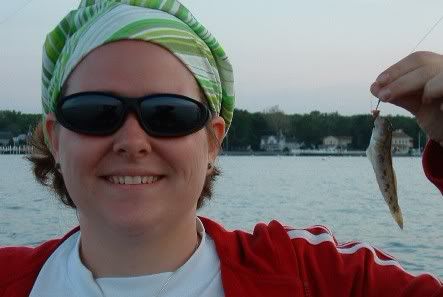There's a party and all the Daphnia are invited
That title there is a quote from Dr. Doug Kane, who teaches the Limnology course up here at Stone Lab.The last two class sessions we've had were just lecture about Grasses, Seges, Rushes and Pondweeds and how to tell them all apart. Since you don't have to know that and, honestly, it requires a dissecting scope at the least, I'll tell you about something else that happens up here.
So, Dr. Kane started our lecture series up here for Term 2. Each Thursday evening, you can come sit in on a short talk about what research is going on (that was Dr. Kane) and then you can listen to a guest lecturer (Joan Herbers, Dean of the College of Biological Sciences at OSU).
Dr. Kane's research is focused on Phytoplankton and Zooplankton. He's been studying the effects of the nutrient loading, and cleaning by Zebra/Quagga Mussels, of Lake Erie on plankton communities.
Why are these important? Because these guys are the base of the food chain. The wee fishies that we love to catch and eat live on phytoplankton for a while and then move up to zooplankton for a little while and then they move onto their normal menus. Without the plankton, we'd have a serious breakdown of food sources. Hence, Dr. Kane argues, it should be viewed as an indicator species.
He talked to us about Limnocalanus macrurus which is a zooplankton that is intolerant to low oxygen levels and high water temperatures. Apparently it was plentiful back in the 1920's but dissappeared for the most part shortly after. It's starting to come back in the Western Basin of Lake Erie but is being seriosuly predated in the Eastern and Central Basins by the Rainbow Smelt.
He's using a process called Planktonic Index Biotic Integrity (P-IBI). And you know, I really have no idea what that means or exactly what it does, but they're using it to find out soom cool things about Plankton in Lake Erie and now they're trying to find out how they can apply this on a global scale.
Our guest lecturer, Dr. Herbers, who is also a professor for EEOB, came to talk to us about the dysfunctional families in the insect world. She said that most people think of insect communities, like ants or bees, as the perfect family. Everyone has thier job and they do it and they work together and all is great and wonderful. I guess that's not the case. Workers can get mad at workers, Queens and workers, Queens and Queens, and so on. Dr. Herbers used her research on Pirate Ants (Arrrr!) to illustrate this.
Picture this: Pirate Ant Queen invades a random host colony, kills off their queen, and starts to lay her eggs. Well, over time, the host colony ants will die off. I guess, the pirate ant offspring are pretty delinquent and can't do anything but raid other host colonies. Why? Well, someone has to do the work because they won't. Once or twice (or more) a season, the queen sends her raiders out and they find a new victim colony. Apparently, these raiders can excrete a hormone that make the victim colony panic so they don't usually fight back. The raiders go in, steal eggs and larvae and take it home with them. These new ants grow up and they have no clue they're not where they are supposed to be. They just go about their business doing what ants are suposed do, work and help their colony survive. As this new group of kidnapped ants die off, lather-rinse-repeat.
In Ohio, it appears we have two different species of pirate ants, one that's been around for a very long time and a new one. Dr. Herbers wanted to see what would happen with the older pirate species and hosts, the newer pirate species and hosts, and what happens when you put both pirate species in the same area with the hosts. Do they kill them off? Does the victim colony survive? How many colonies get invaded in a season?
In order to do thise properly Dr. Herbers and company had to carefully control everything and did so by using ants that are so tiny that they could colonize an acorn. Kinda nice to have your subjects fit into the palm of your hand, eh? They also used DNA fingerprinting so that they could ID which host/victim ants came from which host/victim colony. I won't give away the ending, but it was surprising.
One would think that a talk about ants would be insanely boring but Dr. H managed to make this really interesting and entertaining all at the same time. I give her many props too because about 5 minutes into her almost 2 hour talk, her computer fritzed on her and she had to revert to drawing diagrams on the dry erase board. I hope that I can be that good of a speaker someday. You rock, Dr. Herbers!
FYI: This lecture series is open to the public. You can either come here to Stone Lab or you can visit Ohio State, Kottman Hall Rm. 333 where it's teleconfrenced.


0 Comments:
Post a Comment
<< Home